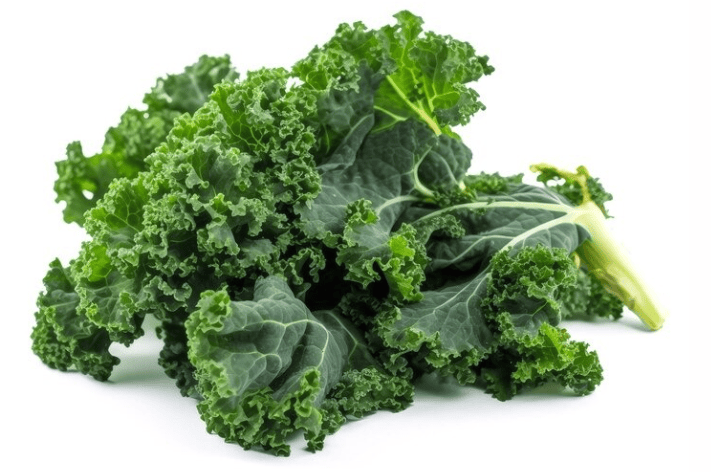When it comes to leafy greens and heart health, few vegetables shine as brightly as spinach and kale. These two powerhouse greens have taken the nutrition world by storm, thanks to their impressive vitamin and mineral profiles. People often wonder: which one is better for the heart? Spinach vs kale—both offer unique benefits, but their effects on cardiovascular wellness might surprise you.
Leafy greens like spinach and kale are packed with antioxidants, fiber, and essential nutrients that support heart function. They help lower blood pressure, reduce inflammation, and improve cholesterol levels. Yet, despite their similarities, subtle differences in nutrient content might tip the scales in favor of one over the other.
So, which leafy green deserves the crown when it comes to heart health? Let’s explore what science says about spinach vs kale and find out which green you should add more often to your plate for a stronger heart.
Heart Disease and the Role of Diet
Heart disease remains the leading cause of death worldwide, making diet for heart health more important than ever. Research consistently shows that eating plenty of leafy greens can lower the risk of cardiovascular disease. Why? These greens are nutrient-dense and packed with antioxidants that fight inflammation—a major contributor to heart problems.
Incorporating greens like spinach and kale into your meals isn’t just about adding color; it’s about giving your heart powerful support. Their vitamins, minerals, and fiber help improve blood flow and reduce cholesterol. Simply put, choosing the right greens can make a real difference in preventing heart disease and promoting long-term cardiovascular wellness.
Nutritional Comparison: Spinach vs. Kale
When it comes to choosing the healthiest leafy green for your heart, it’s not just about taste—it’s about what’s on the inside. The spinach vs kale nutrition debate centers around their unique contributions to heart health.
Spinach is an excellent source of folate, which helps reduce homocysteine levels—a risk factor for heart disease. It’s also rich in natural nitrates that may improve blood vessel function and reduce blood pressure. With high levels of magnesium and vitamin C, spinach offers solid cardiovascular support.
Kale, on the other hand, wins in the antioxidant department. It’s loaded with vitamin K, crucial for arterial health and blood clot regulation. Kale also offers more calcium than spinach and contains powerful antioxidants like lutein and beta-carotene, which help fight oxidative stress and inflammation.
Both are high in fiber and potassium—key nutrients for controlling blood pressure. While kale is slightly lower in calories, both are incredibly nutrient-dense, making them ideal choices for a heart-healthy diet.
Here’s a quick side-by-side comparison:
| Nutrient | Spinach (1 cup raw) | Kale (1 cup raw) |
|---|---|---|
| Folate | 58 mcg | 19 mcg |
| Vitamin K | 145 mcg | 547 mcg |
| Magnesium | 24 mg | 11 mg |
| Vitamin C | 8.4 mg | 19.6 mg |
| Calcium | 30 mg | 53 mg |
| Fiber | 0.7 g | 0.9 g |
| Calories | 7 | 33 |
In the battle of spinach vs kale nutrition, the healthiest leafy green really depends on your specific needs—but both bring impressive heart-protective power to the table.
Cardiovascular Benefits of Spinach
Spinach has earned its reputation as a superfood, especially when it comes to heart health. Its cardiovascular benefits are backed by a growing body of scientific research, particularly regarding spinach and blood pressure control.
One of spinach’s standout features is its high nitrate content. A study published in the Journal of Nutrition found that consuming nitrate-rich vegetables like spinach increased nitric oxide production in the body. Nitric oxide helps relax and widen blood vessels—a process called vasodilation—which leads to lower blood pressure and improved blood flow.
In fact, a 2015 study in Clinical Nutrition Research showed that participants who consumed spinach daily experienced a measurable drop in both systolic and diastolic blood pressure.
Spinach is also rich in potassium, which helps counteract the effects of sodium and contributes to maintaining normal blood pressure. Just one cup of cooked spinach contains about 839 mg of potassium. Additionally, spinach is a top source of folate, a B-vitamin that reduces homocysteine levels. Elevated homocysteine is associated with increased stroke and heart disease risk, making folate a key nutrient for heart protection.
But spinach doesn’t stop there. It’s also packed with antioxidants like lutein and zeaxanthin, which protect the arteries from oxidative stress and inflammation. These compounds may help prevent plaque buildup in the arteries—one of the root causes of atherosclerosis.
When you combine these nutrients with spinach’s low calorie and high fiber profile, it’s clear why spinach is such a smart choice for supporting cardiovascular health. The spinach heart health benefits are real, measurable, and easily accessible in your daily diet.
Cardiovascular Benefits of Kale

Kale is more than just a trendy green—it’s a nutritional powerhouse with real, research-backed benefits for your heart. Studies suggest that incorporating kale into your routine can improve several key markers of cardiovascular health.
First, kale is rich in antioxidants, including quercetin and kaempferol, both of which have been shown to reduce inflammation, lower blood pressure, and protect blood vessels. A study published in Nutrition Research and Practice found that regular consumption of antioxidant-rich vegetables like kale led to improved vascular function and lower oxidative stress levels—two critical factors in heart disease prevention.
Another standout benefit of kale is its high fiber content. One cup of cooked kale provides about 4.7 grams of fiber, which helps lower LDL (“bad”) cholesterol by binding to bile acids and aiding their excretion. Research in the American Journal of Clinical Nutrition has linked higher fiber intake with significantly reduced risks of heart disease and stroke.
Kale also delivers a hefty dose of vitamin K, which plays a critical role in maintaining arterial health. It helps regulate calcium in the arteries, reducing the risk of calcification and arterial stiffness—two major contributors to cardiovascular issues. Just one cup of kale provides over 600% of the daily recommended intake for vitamin K.
\Finally, kale contains alpha-linolenic acid (ALA), a plant-based omega-3 fatty acid with anti-inflammatory properties. According to a review in Nutrients, ALA intake is associated with reduced cardiovascular risk and improved lipid profiles.
Altogether, these kale cardiovascular benefits make a strong case for adding more of this leafy green to your plate. From reducing cholesterol to protecting your arteries, kale offers comprehensive support for heart health.
Spinach vs Kale: Which Is Better for Your Heart?
When it comes to spinach vs kale for heart health, the truth is—both deserve a spot on your plate. Each leafy green offers unique advantages, and understanding those differences can help you make smarter, heart-conscious choices.
Spinach stands out for its ability to support healthy blood pressure. Its naturally high nitrate levels enhance nitric oxide production, helping blood vessels relax and improve circulation. Along with that, spinach provides a rich source of potassium and folate—two nutrients strongly linked to lower stroke risk and improved heart function.
Kale, on the other hand, brings different strengths to the table. Its high fiber content helps reduce LDL (“bad”) cholesterol, while its impressive levels of vitamin K contribute to arterial flexibility and protection against calcification. Kale is also rich in plant-based omega-3s (ALA), adding powerful anti-inflammatory support to its heart-healthy profile.
So, which is better? It depends on what your heart needs. If blood pressure is your main concern, spinach might have the edge. If you’re focused on lowering cholesterol and protecting your arteries, kale could be more beneficial. But here’s the best part—you don’t have to choose just one.
Incorporating both into your weekly meals gives your body a broader spectrum of nutrients and protective compounds. Salads, smoothies, soups—there are endless ways to rotate these greens into your diet. The real win for your heart lies not in picking sides, but in choosing variety and making leafy greens a consistent part of your lifestyle.
How to Eat More Kale and Spinach
Ready to boost your heart health? Adding more spinach and kale to your meals is easier (and tastier) than you might think. Whether you’re a seasoned veggie lover or just getting started, there are plenty of simple, delicious ways to enjoy these leafy powerhouses.
One of the easiest ways to increase your intake is by tossing them into smoothies. A handful of spinach or kale blends well with fruit, yogurt, and nut butter—plus, it’s a great way to start the day with a dose of greens. Prefer something savory? Try adding them to soups, stir-fries, or sautés for a flavorful and nutrient-rich upgrade.
Light steaming is another great option, especially for kale, as it improves digestibility and reduces bitterness. Want to make the most of their nutrients? Pair your greens with healthy fats like olive oil, nuts, or avocado. Fat helps your body absorb fat-soluble vitamins like A, E, and K.
Need inspiration? Explore easy spinach kale recipes online—think frittatas, grain bowls, or warm salads with garlic and lemon. Better yet, mix both greens into your weekly meals to keep things interesting and maximize nutritional variety.
Knowing how to eat spinach and kale isn’t complicated—it’s about getting creative, trying new combos, and making them a regular part of your lifestyle. Your heart (and your taste buds) will thank you.
FAQs: Spinach and Kale for Heart Health
Is raw or cooked kale better for heart health?
Both forms are beneficial, but cooking kale can enhance digestibility and reduce compounds like oxalates that interfere with mineral absorption. Light steaming also helps release antioxidants while preserving its rich vitamin K content, which supports arterial health.
Can I eat spinach every day?
Yes, in most cases. Daily spinach can provide consistent support for blood pressure and heart function thanks to its high nitrate, folate, and potassium content. However, if you have kidney stones or are at risk for them, you may need to moderate intake due to spinach’s oxalate content. Talk to your healthcare provider if you’re unsure.
Do these greens thin the blood due to vitamin K?
Actually, it’s the opposite. Vitamin K helps with blood clotting and supports arterial health, which is crucial for preventing calcification and stiffening. If you’re on blood thinners like warfarin, you don’t need to avoid spinach or kale—but it’s important to keep your intake consistent and inform your doctor.
Are there risks with eating too much kale or spinach?
In general, both are safe and healthy. But in excess, they may contribute to thyroid issues (due to goitrogens in kale) or kidney stones (due to oxalates in spinach). Eating a balanced, varied diet and rotating your greens helps minimize any potential downsides.
Conclusion: The Power of Heart-Healthy Leafy Greens
When it comes to heart-healthy leafy greens, both spinach and kale shine in their own way. Spinach supports healthy blood pressure with its nitrates and potassium, while kale promotes cholesterol control and arterial health with its fiber, vitamin K, and antioxidants.
So, which one wins the spinach vs kale debate? The truth is, you don’t have to choose. Each green brings something different to the table, and combining them is a smart move for overall cardiovascular support.
Incorporating both into your weekly meals—whether in salads, smoothies, soups, or sautés—ensures you get a wide spectrum of heart-protective nutrients. Variety isn’t just the spice of life—it’s also the key to a stronger, healthier heart.
Start small, stay consistent, and let these powerful greens do their part in supporting your long-term wellness.
